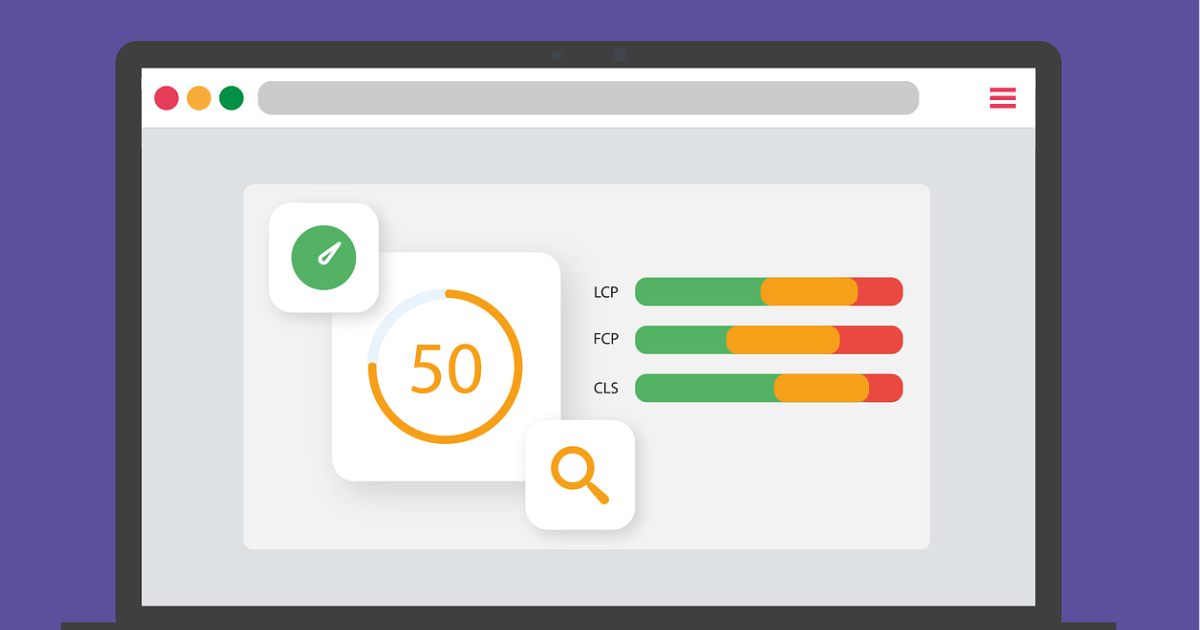“How do H-tags (headings) affect SEO?”
“I want to know the correct way to use H-tags!”
Are you thinking like this?
H-tags have the role of dividing the text on a page and indicating what kind of content is written in each section.
If H-tags are used appropriately, you can effectively communicate the content of the page to both search engines and users, which can positively impact SEO rankings.
However, many people might be using H-tags “just because” or “including keywords for now” when creating content.
Therefore, this article explains the following topics.
- What are H-tags?
- SEO effects of H-tags
- Three rules for using H-tags
- Four tips for creating readable headings
- Frequently asked questions about H-tags
Web managers and SEO writers who want to know more about how to use and write H-tags should refer to this article.
Table of contents
What are H-tags (heading tags)?
H-tags are tags used to create “headings” within a web page.
The heading of this section, “What are H-tags (heading tags)?”, is also a heading created with an H-tag.
By the way, the “h” in H-tag comes from the English word “Heading”.
When creating headings on a web page, it is standard to use HTML “H-tags”, which can be written as follows, understandable by computers.
<h2>What are H-tags (heading tags)?</h2>
Headings written with H-tags are displayed larger and more emphasized than regular text.
There are six levels of H-tags from h1 to h6, which can create a hierarchy within the text based on importance.
h1 is the most important tag, and h6 is the least important tag.
In WordPress, if you set “Heading 2, Heading 3, Heading 4…” in the editor, headings are automatically added with H-tags.
Why headings are important
Headings influence whether users will read the article.
If the visited page lacks headings, many users might hesitate to read it.
Even the same text, when organized with headings, can be read without stress as the information is neatly arranged.
Using headings makes the content “scannable”.
“Scannable” content refers to content that is easy to read with minimal effort and can be understood even when “scanned” quickly.
Web users generally do not read text thoroughly.
According to an old study by Dr. Jakob Nielsen, only about 16% of users read word-by-word.
Reference: Nielsen Norman Group – How Users Read on the Web
In other words, most users consume content by “scanning” through it.
Therefore, to be read by many people, it is important to provide “scannable, stress-free content” that can be understood even when read quickly.
So, how does placing headings with H-tags affect SEO?
The next chapter explains the SEO effects of H-tags.
SEO Effects of H-Tags
H-Tags are believed to influence SEO in the following two ways:
- Effect 1. Helps user understanding
- Effect 2. Helps search engine understanding
Effect 1. Helps User Understanding
In SEO, creating pages with users in mind is crucial.
This is because Google, which determines page rankings, espouses a “User First” philosophy.
- Focusing on users will lead to everything else following afterward.
Google has always prioritized user convenience.
Basic principles
- Create pages prioritizing user convenience rather than search engines.
By placing H-tags, the content becomes easier for users to understand in the following ways:
- Understanding the structure of the text (creating coherence and hierarchical structure in the text, so users don’t get lost)
- Quickly grasping the main points
- Easy access to desired information
As a result, it also has a positive effect on SEO.
Effect 2. Helps Search Engine Understanding
In SEO, it is also important for search engines to accurately understand the content of the page.
H-Tags help search engines understand the page content.
Google’s John Mueller mentioned the following in a Google Central office hours session:
Headings on a page help better understand the content of that page.
However, headings on a page alone are not the only ranking factor. We also look at content on its own.
However, clear headings on a page can sometimes provide a little bit of information about what that section is about.Source: YouTube – English Google Webmaster Central office-hours from August 7, 2020
In other words, H-tags help Google understand “what topics are covered within a page.”
The presence of the term “ranking factor” suggests that the content of H-tags may also influence rankings.
Moreover, from the following statement, it’s evident that H-tags are particularly helpful in understanding images:
Especially with images, the context of headings and images is very helpful for understanding where to display that image in image search.
Because images are not text, it’s not automatically clear what the image should be shown for.Source: YouTube – English Google Webmaster Central office-hours from August 7, 2020
While search engine accuracy is improving every day, search engines still cannot perfectly understand images.
Therefore, it means that the “headings” of chapters containing images are referenced.
In this way, H-tags are an important element that can affect search rankings.
In the next chapter, we will explain the three rules for using H-tags, also touching on Google’s official information.
Three Rules for Using H-Tags
Proper use of H-tags can enhance SEO effectiveness and user satisfaction.
When using H-tags, pay particular attention to the following three points:
- Rule 1. Use in order
- Rule 2. Do not use for mere emphasis
- Rule 3. Do not use excessively
Rule 1. Use in Order
Use H-tags in the correct order and hierarchy.
If the order becomes irregular, such as placing h3 before h2 or h4 immediately after h2, it will not achieve the original purpose of indicating “easy-to-understand content structure.”
Also, items on the same level should be described with H-tags of the same hierarchy.
For example, when introducing the “Three Rules for Using H-Tags,” using <h3> for “1. Use in order” and <h4> for “2. Do not use for mere emphasis” would feel unnatural.
When using H-tags, be conscious of the order and hierarchy to create a cohesive structure.
- Use H-tags sequentially from h1→h2→h3→h4… (organize the content properly between higher and lower levels)
- Describe items on the same level with H-tags of the same hierarchy
Rule 2. Do Not Use for Mere Emphasis
H-tags are intended to make the structure of a page clear.
A common mistake is using H-tags simply because “I want to emphasize” or “the design of h3 headings looks good.”
Avoid using H-tags regardless of the page’s structure.
Avoid the following:
- Using heading tags to format text rather than to indicate structure.
Source: Search Engine Optimization (SEO) Starter Guide – Use heading tags to emphasize important text
If you want to emphasize text, use emphasis tags (<strong>, <b>, <em>, etc.) rather than H-tags.
Rule 3. Do Not Overuse
Excessive use of H-tags can make the page structure unclear and diminish the effectiveness of headings.
Even on Google’s official page, it is recommended to use headings “moderately” throughout the page.
Use headings throughout the page moderately.
Heading tags should be used where they make sense. Having too many heading tags on a page can make it hard for users to scan the content and determine where one topic ends and another begins.
Source: Search Engine Optimization (SEO) Starter Guide – Use heading tags to emphasize important text
However, cramming too much information into one chapter (heading) is also undesirable for users.
For example, explaining everything from the purpose and definition of SEO to its pros and cons within one chapter (heading) titled “What is SEO” would result in a long chunk of text.
Be aware that headings are meant to “organize the structure of a page” and use them at meaningful points.
In general, as long as you are conscious of “one theme per heading,” there should be no problem with the content structure.
In the next chapter, we will discuss how to create headings that are preferred by users.
Four Tips for Creating Readable Headings
In this chapter, we’ll explain four tips for creating heading wording.
- Tip 1. Summarize concisely
- Tip 2. Choose words tailored to users
- Tip 3. Do not cram too many keywords
- Tip 4. Align with the body text
Tip 1. Keep It Concise
Headings should be kept as simple as possible.
The ideal is a “simple and instantly understandable heading.”
As mentioned earlier, users skim through pages, so complex or lengthy headings won’t catch their eye.
If it doesn’t catch the user’s eye, the likelihood of that section actually being read decreases.
Consciously summarize the theme or conclusion of the text “concisely.”
Tip 2. Choose Words Tailored to Users
When creating headings, use words that are easy for users to understand or that pique their interest.
One way to do this is to check suggested keywords or related keywords.
Suggested keywords or related keywords are those that users who searched for the target keyword are likely interested in or likely to search for again.
If suggested or related keywords are included in the heading, it is more likely to catch the user’s eye.
In fact, headings in this article were created after checking suggested and related keywords.
| Example of Headings Referencing Suggested and Related Keywords | |
| Suggested and Related Keywords | Headings Used in This Article |
| h tag seo effect | “SEO Effects of H-Tags” |
| seo h tag image | “3. Can You Use Images with H-Tags?” |
However, the most important thing in SEO is to meet search intent.
You don’t necessarily have to use suggested keywords or related keywords as they are.
By considering “what words resonate with the target users?” and “what words are easy to understand?” you can create headings that are more likely to be read.
Tip 3. Avoid Overloading with Keywords
Forcing keywords unnaturally into headings not only reduces user convenience but also carries the risk of receiving penalties from Google, so let’s refrain from doing so.
Reference: Google Search Central – Irrelevant Keywords
Of course, when creating content with keyword considerations in mind, it’s natural for keywords to be included in the headings, so there’s no problem as long as it’s within a natural range.
However, excessive keyword stuffing leads to loss of conciseness and readability.
For example, consider the following example (“KW: Long-Tail Keyword”).
Focus on user readability and avoid overloading headings with keywords.
Tip 4. Align with the Body Text
It’s important for the content of headings to align with the body text.
Think of headings as condensed versions of “what’s written in that part.”
If the wording of the heading deviates from the content of the body text, it can cause user dissatisfaction and lead to abandonment.
For example, if a heading is “History of SEO” but only discusses the “Benefits of SEO,” it will disappoint users who expected to learn about the history of SEO.
Since headings are often set before writing articles in SEO, it’s common for headings and body text to deviate.
After creating content, it’s recommended to check whether the content of the body text matches the headings.
If you still have unanswered questions about H-tags, please read the “Frequently Asked Questions” in the final chapter.
Frequently Asked Questions about H-Tags
In this chapter, we’ll answer four common questions about H-tags.
- 1. Is it best to have only one h1 per page?
- 2. What’s the difference between h1 tags and title tags?
- 3. Can you use images with H-tags?
- 4. Is there a character limit for H-tags?
1. Is it best to have only one h1 per page?
In conclusion, there are no clear rules regarding the frequency of h1 tag usage.
Regarding the question of whether it’s necessary to have one h1 tag per page or if it’s okay to use multiple, Google’s John Mueller has responded as follows:
You can use the h1 tag as many times as you like within a page.
There are no upper or lower limits.Source: YouTube – English Google Webmaster Central office-hours from September 27, 2019
However, from a usability standpoint, h1 tags should be placed after considering whether they are necessary for users.
Some SEO tools highlight this as an issue and say things like ‘no h1 tag’ or ‘two h1 tags.’ From our perspective, that’s not an important issue.
From a usability standpoint, it probably makes sense to improve it.Source: YouTube – English Google Webmaster Central office-hours from September 27, 2019
However, since h1 is the most important “main heading” on the web page, it’s common for most websites to set it to reflect the “title” and use one per page.
2. What’s the Difference Between h1 Tag and Title Tag?
The h1 tag is used for writing the “main heading,” while the title tag is used for writing the “page title.”
- h1 tag: Appears to users viewing the web page (h1 tags may also appear in search results)
- title tag: Appears when viewed externally, such as in search results or when shared on social media
Although there are such differences, it’s not a problem if the content of the h1 tag and the title tag is the same.
This is because the essential role of both is to “succinctly express the overall content of the page.”
In fact, in many web pages, the content of the title tag is directly reflected in the h1 tag.
In WordPress, many themes automatically reflect the content entered in the title tag in the h1 tag.
3. Can Images Be Used with H-Tags?
In conclusion, it’s not recommended to use images with H-tags.
This is because Google’s official information states the following:
Use text instead of images for displaying important names, content, and links.
Source: Webmaster Guidelines – Helping visitors use your pages
While search engine capabilities are improving daily, search engines are still better at understanding text than images.
When creating headings, using text will more accurately convey the content of the page.
4. Is There a Character Limit for H-Tags?
There is no specific character limit for H-tags.
However, “overly long headings” reduce user convenience and consequently have a negative impact on SEO.
Google also states the following:
Avoid the following:
- Using very long headings
Source: SEO Starter Guide – Emphasizing important text using heading tags
Try to create headings that are as concise as possible.
【Summary】In SEO, User Convenience Is Important! Let’s Create Pages That Are Easy to Understand Using H-Tags
As we’ve discussed, placing H-tags appropriately within the content makes it easier for both users and search engines to understand the created content.
First and foremost, let’s prioritize user convenience and work on creating easy-to-understand pages.




